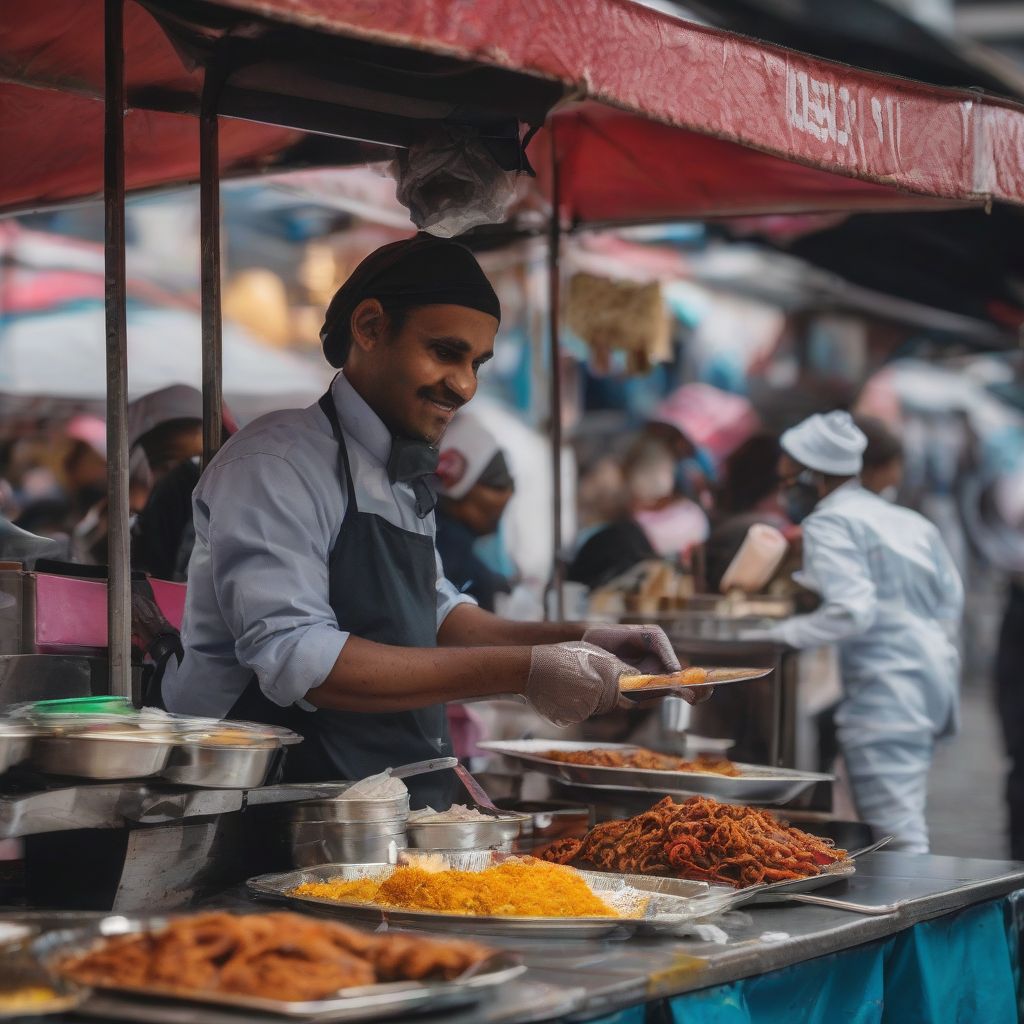Imagine biting into a juicy, flavorful kebab in a bustling Moroccan market, or savoring a steaming bowl of pho on a vibrant Hanoi street corner. Street food offers a delicious and immersive cultural experience, but it’s crucial to prioritize your health while indulging. So, how can you enjoy these culinary adventures without compromising your well-being? This guide provides essential tips to stay safe while trying street food abroad.
Choosing the Right Vendors
Look for Crowds and Queues
A popular stall with locals queuing up is often a good sign. It suggests fresh food and high turnover, reducing the risk of consuming something that’s been sitting out too long. As a registered dietitian, I often advise my clients to follow the crowd when choosing street food vendors. It’s like a built-in recommendation system!
Observe Food Handling Practices
Pay attention to how vendors handle food. Are they using clean utensils? Are raw and cooked foods kept separate? Do they wash their hands frequently? These are critical indicators of food safety standards. “Just like in a professional kitchen,” says renowned food safety expert Dr. Emily Carter, “hygiene is paramount in street food settings.”
Check for Proper Cooking Temperatures
Ensure food is cooked thoroughly, especially meat and seafood. Avoid stalls where food appears undercooked or has been sitting out at room temperature for extended periods. This is a fundamental principle of food safety, regardless of where you are in the world.
 street-food-safety
street-food-safety
Assessing the Environment
Choose Busy Areas
Opt for street food stalls in well-lit and busy areas, as these tend to be better regulated and monitored. Avoid isolated stalls in dimly lit locations, as they may lack proper hygiene and oversight.
Consider the Overall Cleanliness
Assess the general cleanliness of the stall and surrounding area. Is the area clean and free of garbage? Are there flies or other insects present? These factors can indicate potential hygiene issues.
Trust Your Gut
If something doesn’t feel right, trust your instincts. Your intuition can be a powerful tool in assessing potential risks. If a stall looks unclean or the food seems questionable, it’s best to err on the side of caution and move on.
Protecting Yourself
Wash Your Hands Frequently
Handwashing is crucial, especially before and after eating. Carry hand sanitizer with you and use it frequently, especially if soap and water are unavailable. This is a simple yet effective way to prevent the spread of germs.
Start Small
When trying new street food, start with small portions. This allows you to sample different dishes without overeating and minimizes the risk of a severe reaction if something doesn’t agree with you.
Stay Hydrated
Drink bottled or purified water to stay hydrated. Avoid ice in drinks, as it may be made from contaminated water. Proper hydration is essential for overall health and can help your body cope with any potential foodborne illnesses.
Be Mindful of Raw Foods
Be cautious of raw foods, including salads, fruits, and vegetables that may have been washed with contaminated water. Stick to cooked foods whenever possible to minimize the risk of foodborne illness.
Pack Medications
Carry essential medications, including anti-diarrheal and anti-nausea medication, just in case. Consult your doctor or a travel health specialist about necessary precautions and vaccinations before your trip.
Enjoying the Experience
Embrace Local Cuisine
Don’t be afraid to try new and exotic dishes. Street food offers a unique opportunity to experience the local culture and flavors. “Food is a universal language,” says celebrity chef Anthony Bourdain in his book Kitchen Confidential, “and street food is its most vibrant dialect.”
Engage with Vendors
Interact with the vendors and learn about their food. This can enhance your cultural experience and give you valuable insights into local culinary traditions.
Savor the Moment
Take your time to savor the flavors and atmosphere. Street food is not just about eating; it’s about immersing yourself in the local culture and creating lasting memories.
 woman-eating-street-food
woman-eating-street-food
Conclusion
Trying street food abroad is an exciting part of the travel experience. By following these simple precautions, you can indulge in the delicious offerings while minimizing risks to your health. Remember to choose reputable vendors, assess the environment, and practice good hygiene. Most importantly, savor the unique flavors and embrace the cultural immersion that street food offers. Have you had any memorable street food experiences abroad? Share your stories and tips in the comments below! And for more tips on healthy eating while traveling, check out our other blog posts on nutrition and wellness.



